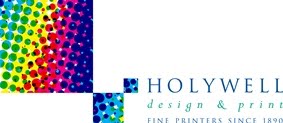This year is the 50th anniversary of the death of William Morris, founder of Oxford based Morris Motors. Lord Nuffield as he later became, was the most famous industrialist of his age, and a generous philanthropist who donated much of his personal fortune to charitable causes; a lesser known fact perhaps, is that he is also someone to whom Holywell will always owe a debt of gratitude…
A contemporary of Harry Burrows, founder of the Holywell Press, Morris engaged Holywell to produce much of the advertising material promoting the early Morris cars. As a result of their business dealings, the two men became great personal friends, and during the second World War, this friendship, and the direct intervention of Morris played a key role in the story of Holywell; in fact, it’s not an exaggeration to say that if it were not for William Morris, it’s possible Holywell would not be here today.
In 1942, at the height of the war, the Board of Trade wrote to Harry Burrows notifying him of their intention to requisition the Holywell factory in Alfred Street, Oxford, where our printing presses were located in those days. The letter, received in May of that year, stated simply, “I regret it will be necessary to take over the premises occupied by you for work of national importance.” We can’t be sure for what purpose exactly the Board wanted to requisition our factory, but it was well known that Hitler did not want to bomb the city - some sources even said that he was intending to use Oxford as his capital if he conquered England - and so for this reason, factory space in the city would have been much sought after by the War Office.
But in fact, Holywell was already doing its bit for the war effort – including working for no less than 33 units of the services, as well as for William Morris who was himself putting many of his resources at the disposal of his country. Harry asked his friend to step in and make this point to the Board which he duly did, explaining in a face-to-face meeting and in subsequent correspondence, the importance of the contribution Holywell was already making to the war. As a result of Morris’s appeal, the Board withdrew its requisition notice saying, “it appears that as the Holywell Press is doing a considerable amount of work for so many of your interests which are engaged on essential war work, it would be advisable to arrange for the Holywell Press to continue in operation.”
And so, thanks to Lord Nuffield, we lived to fight another day – and another 71 years!
The communications between Morris, Harry Burrows and the Board of Trade are in the Holywell archives, and we recently made them available to the National Trust - guardians of Nuffield Place, Lord Nuffield’s Oxfordshire home. Located between Henley on Thames and Wallingford, the house ̶ which the National Trust calls ‘The home of one of the most remarkable men of the 20th century’ - is open to visitors and well worth seeing. For information on Nuffield Place, please click here!
If you’ve found this blog useful, why not subscribe to our monthly newsletter for more – click here!







.jpg)













